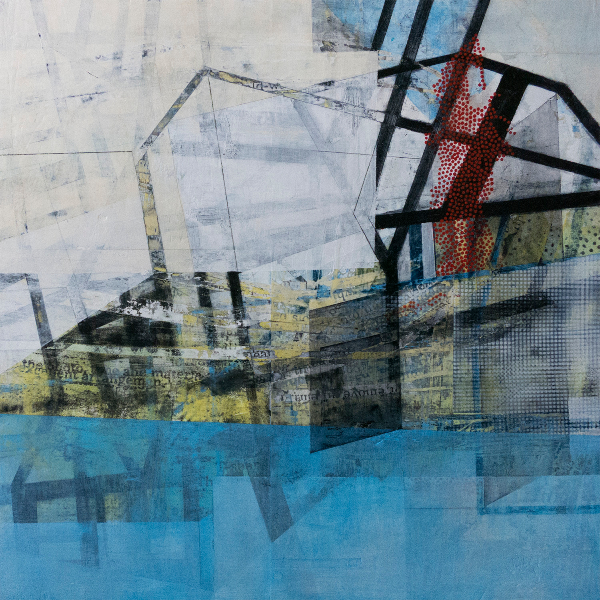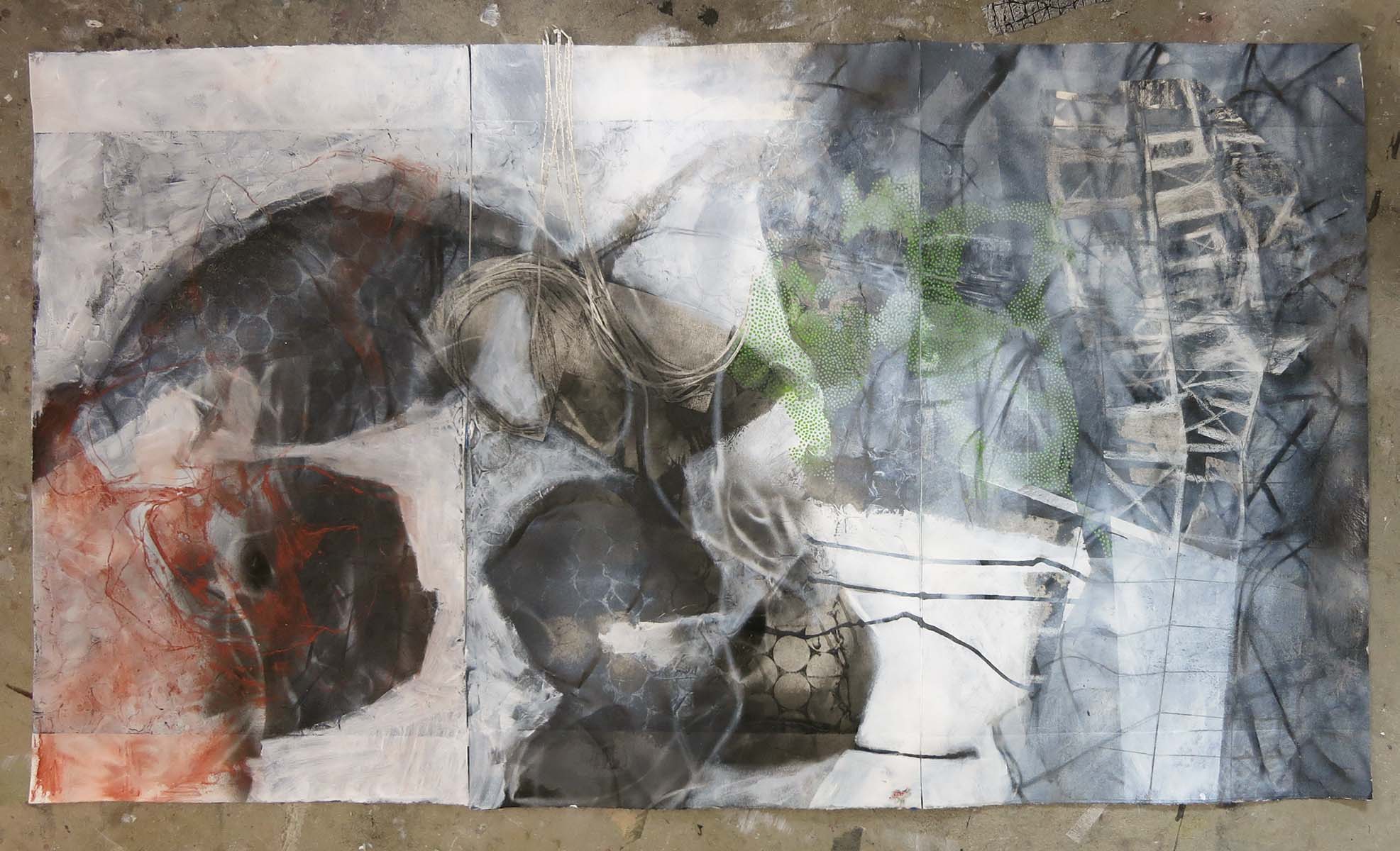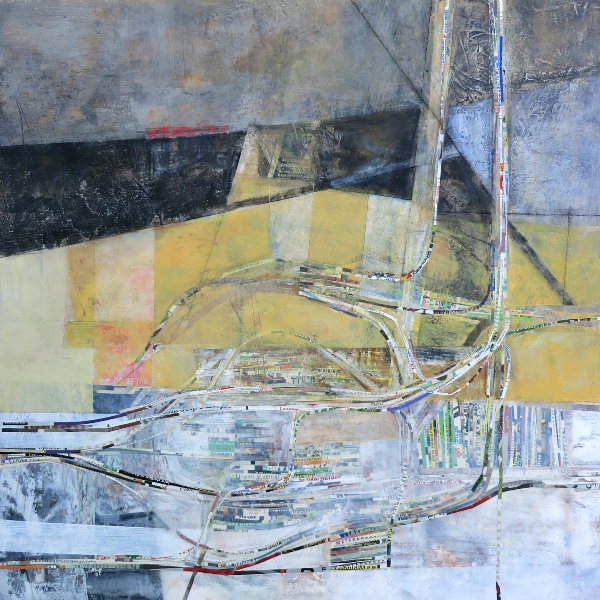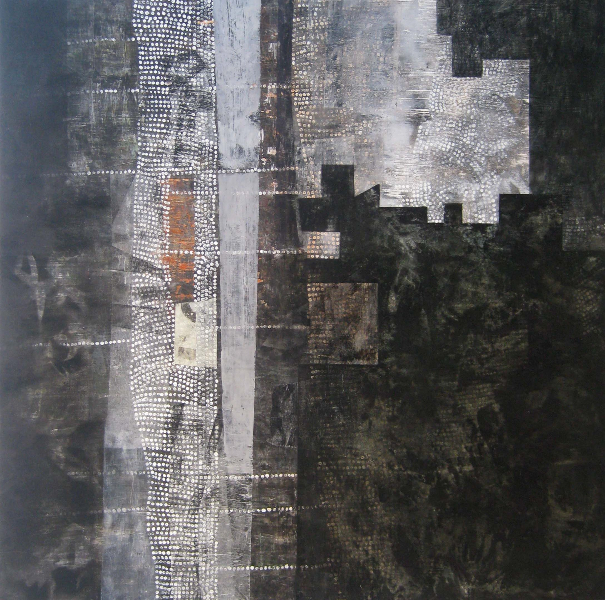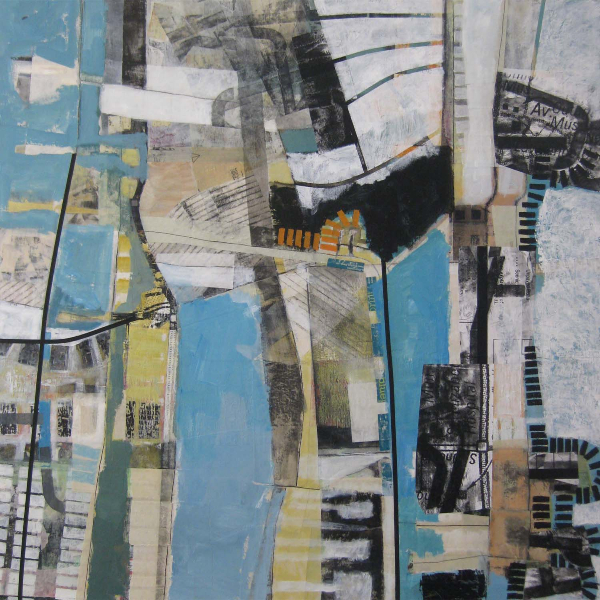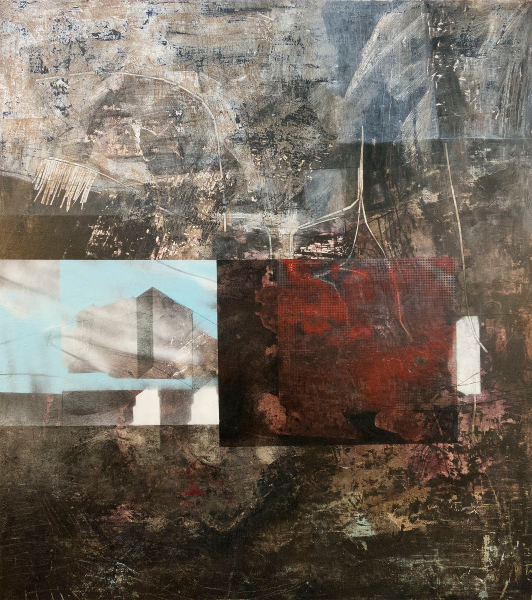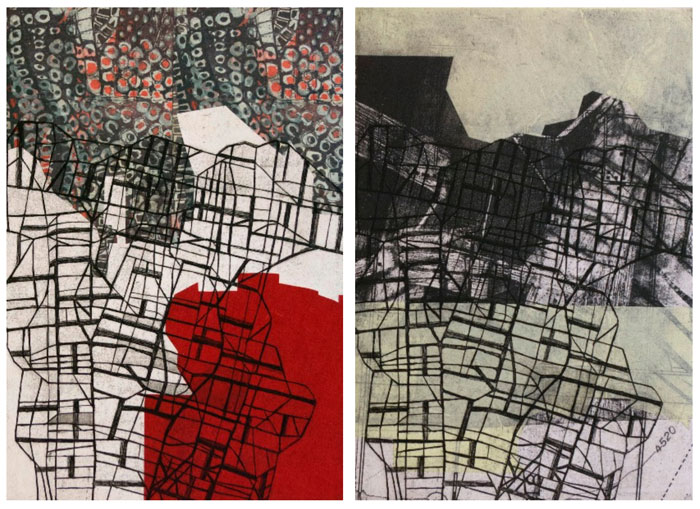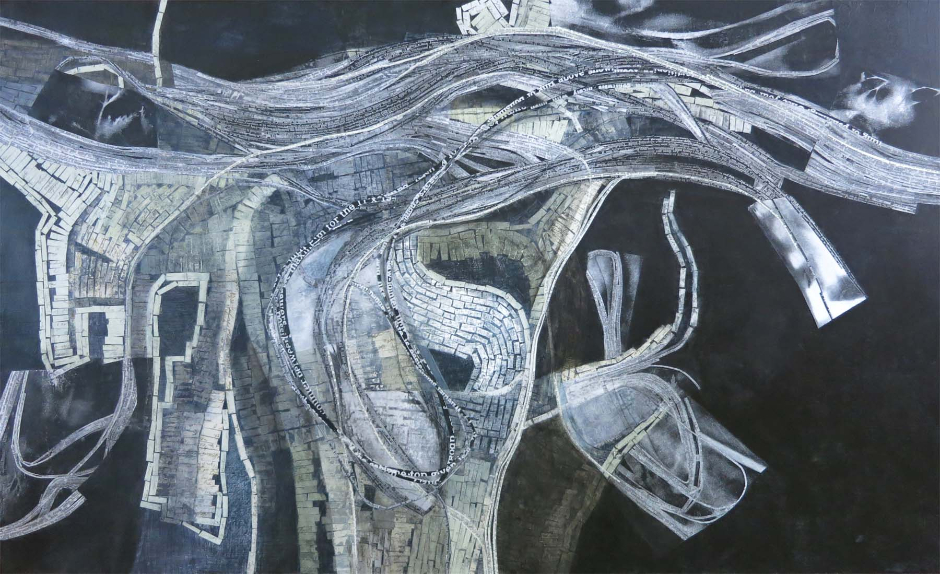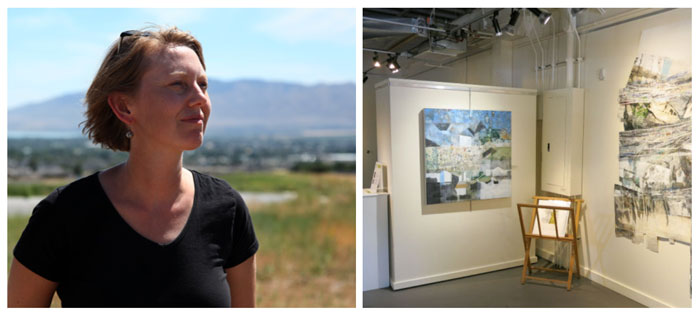Linnie Brown is an adroit artist and teacher. Born in Portland, Oregon she graduated from BYU with a Bachelor of Fine Arts in Art and she earned an MFA degree at the University of Utah. Brown lives in Utah and teaches drawing at the University of Utah.
Tell us about your evolution as an artist. I studied painting as an undergraduate at BYU, and whether it was my instructors or my own personal aesthetic, I feel like I was always drawn towards abstraction. When I look back on my classwork, even still-life or figure drawings, I was cropping or simplifying elements so it was usually more about design and arranging shapes, values, and colors. In one class, we created and used stencils in our paintings. I was really attracted to the idea of being able to rapidly repeat and build up layers. I worked at a copy center at the time (with a great discount), and starting creating stencils from photocopies. After that, I transitioned into using photocopies and found paper directly as collage elements. Collage appealed to me, just like the stenciling had, as a way to quickly layer visual information.
For a decade or so after college, my work dealt primarily with the idea of achieving visual balance. Meanwhile, I got married, taught high school art for a couple of years, had two kids, and made art part-time. Collage became even more important in my work. I think a lot of that has to do with its physicality—it’s not an illusion of something, but it’s actually there, with distinct edges and depth. It can completely obscure what’s underneath or be sanded back by degrees to partially reveal previous layers. Each piece of paper also brings its own history with it, creating the potential for even more layering of ideas. I switched from oils to acrylic so I could incorporate collage at any point in the creating process. I went to graduate school at the University of Utah from 2013-2015 and that was a challenging (but good) experience for me. I questioned and re-established the ideas behind my art-making and had the chance to explore additional media.
You once wrote, ‘My artwork is based on the idea of achieving a visual balance between conflicting ideas and imagery.’ I would purposely start an artwork with imagery of two things that in my mind seemed at odds with each other: decorative patterns vs. tools, fossils vs. appliances, maps vs. plants, etc. Then I would rework, abstract, and layer those images until they fit together with some sort of resolution. The end image wouldn’t look like one thing or the other but would have morphed into something unique that was a little bit of both. The challenge of finding that balance and resolution was interesting to me, and I think also alludes to the idea of living lives that are full of this type of tension and negotiation. At what point do you change yourself to fit into circumstances, relationships, expectations, and at what point do they need to change?
A lot of my previous work was directed at achieving this balance, particularly between natural and man-made imagery. Some of the recent, rapid growth in my community though, started to make me realize that my environment is not like this–it’s awkward, one-sided, fragmented, and unresolved. So that’s something I’m starting to explore more of-creating a sense of layers of human activity with less emphasis on the harmonious design.
Your work is so original. How do you get started on a new piece? My recent work deals with layers and patterns of development and how we move through developed spaces. I try to continually make/collect images dealing with those ideas so I have a library of sorts to use. I take photos of roads and construction sites in my area, look at Google Earth views, find maps of all kinds, and create elaborate on-going sketchbook doodles. When I’m starting an actual piece, I will usually quickly draw or collage one of those images I’ve found or created and then respond to it. My work is very process-oriented and intuitive, so from that point I’ll add collage or paint layers, scrape a few things back, paint or draw more, and so on—all depending on what I feel like the piece needs as I go. I may have a loose idea, like “all the back-and-forth driving this neighborhood does” or “how do I show layers of time in this space?”, but I never really have a pre-conceived idea of the finished piece.
What’s next for you? I’m working on a collagraph project up at Saltgrass Printmakers in Salt Lake. The idea is that I will make a plate and print it. Then I will re-work and re-print the plate, repeating this process over and over again. Fragments of earlier states may remain visible or inform later choices, but there’s no going back once the plate has been changed. Each print will represent a fugitive moment in time, documenting the changing condition of the plate. Because collagraph plates can be constructed from so many materials, I kind of feel like I’m making a painting and documenting it as I go. Collagraphs are new for me so there’s a certain amount of trial and error involved. A second, side project will be a large-format folded sketchbook composed of all the “mis-prints”.
Like Linnie Brown on Facebook.
Images courtesy Linnie Brown and Artists of Utah.
